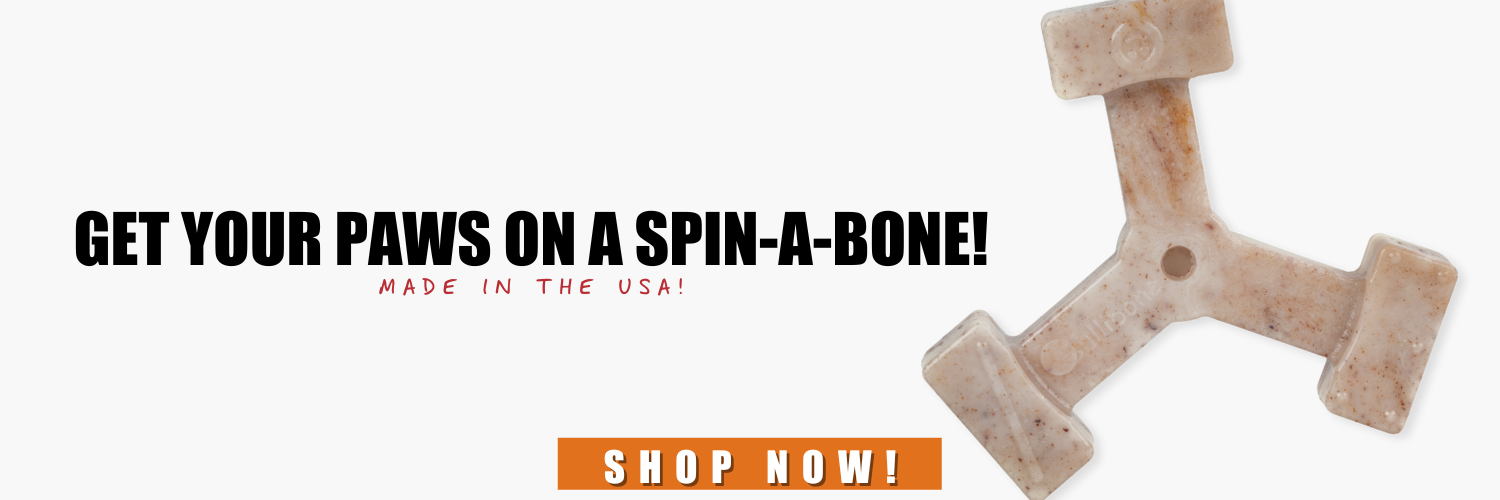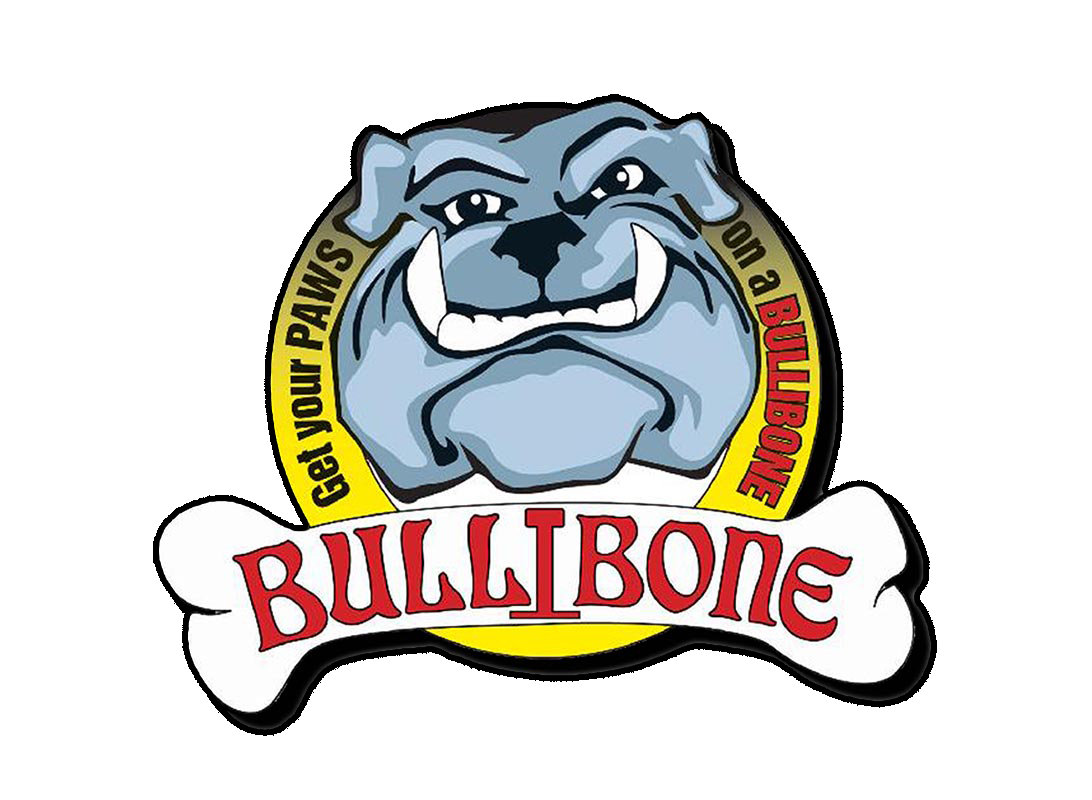Do we love our dogs? Absolutely!
Do we wish they could understand language sometimes when they are acting crazy? DUH!
They may be man’s best friend, but sometimes they act out when they feel anxious. We share an inseparable bond with our furry companions, but there is often a communication gap. As we leave the house, we often long to reassure them that our absence is temporary. Yet, our pups may sometimes believe that we’ve vanished for good and won’t return. This can lead to instant separation anxiety, which is why many people have come home to see their house torn to shreds because a common outlet for this anxiety is destructive behavior. Have you ever got a call from a neighbor that they hear your dog howling next door? Well, excessive barking is also a very common outlet for this anxiety.
So let’s get down to business and discuss how to get a dog to calm down when experiencing anxiety and provide some tips that you can use as a dog owner to help your furry friend get over this common problem.
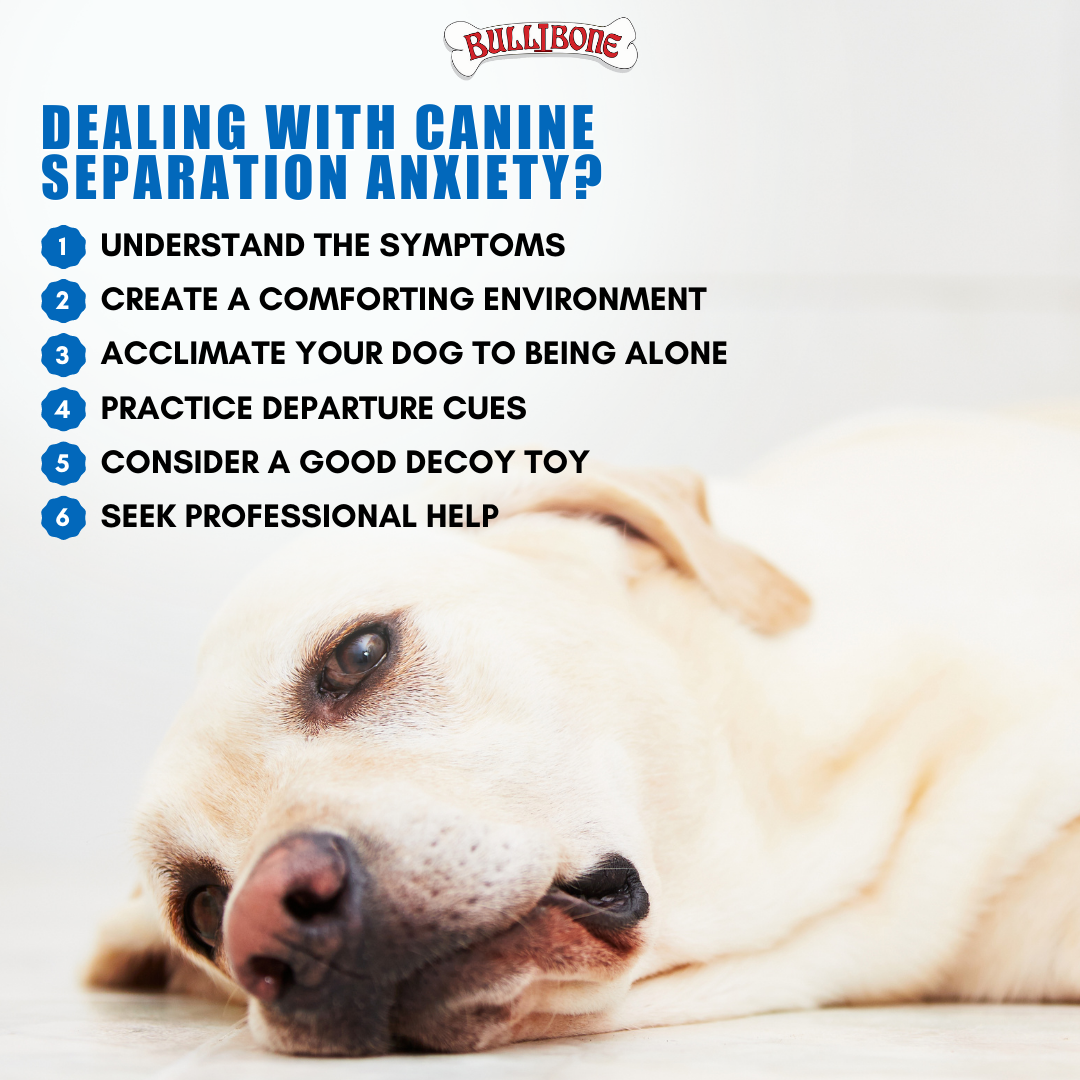
- Understand the symptoms
To better understand our pup’s well-being, it’s crucial to pay close attention to their symptoms and behaviors. This allows us to determine if they’re grappling with separation anxiety or any other form of anxiety. Dogs afflicted by separation anxiety often resort to undesirable behaviors as a means to cope with their inner turmoil. Was your favorite pair of shoes ripped to shreds? Well, that’s just the tip of the iceberg. Other unwanted behaviors include barking, howling, pacing, destructive chewing, digging, and inappropriate urination or defecation. We are assuming these are unwanted behaviors, but if you like it when your dog does these things, feel free to ignore these tips. (Hopefully, you understood that’s a joke). If you believe that the cause might be health-related, it’s a good idea to reach out to your vet for guidance and rule out any underlying medical conditions. While it’s usually not a sign of anything serious, it’s better to be safe than sorry when it comes to taking care of our dogs and ensuring their well-being.
- Create a safe and comforting environment
Is your dog running around all day full of energy like the energizer bunny? Your dog is a little bundle of energy and some breeds have a bigger battery than others. The more hyperactive they are, the more they are susceptible to feeling stressed and scared when their owner leaves. So let’s look at some ways to help your furry friend feel more comfortable.
- Create a safe and comforting environment
- You can provide your anxious dog with a comfortable bed
- Positive reinforcement
- Give them their favorite calming dog toys
- A calming supplement to help calm them down and keep them occupied while you’re away
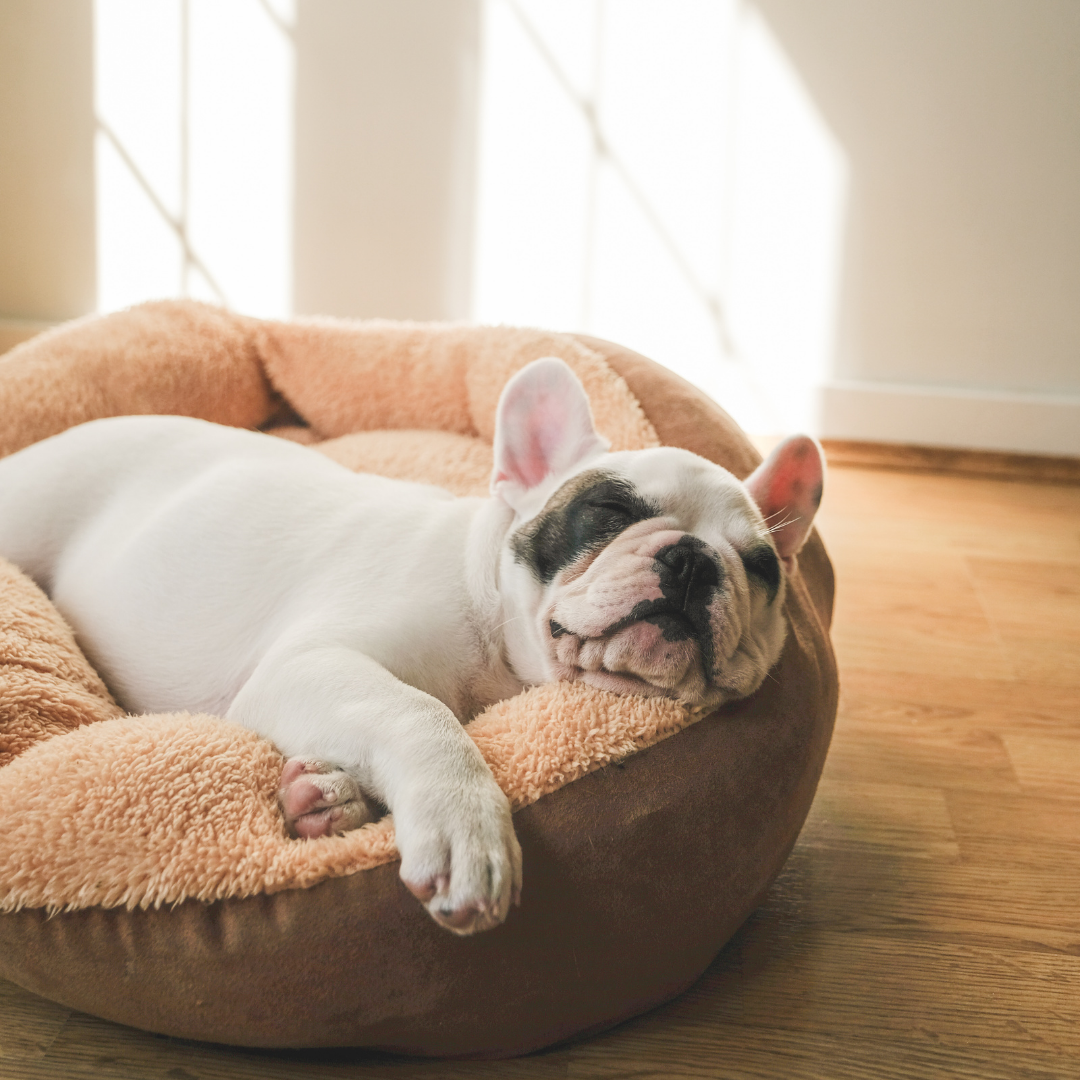
- Gradually acclimate your dog to being alone
If your dog associates your leaving with being alone for hours and hours, they will be conditioned to get anxious as soon as you approach the front door. A practical approach to fostering calm behavior involves gradually familiarizing them with solitude. It begins by initially leaving your dog alone for brief intervals and gradually extending the duration of your absence. This progressive acclimation method proves to be one of the most effective ways to support your pup in developing a sense of ease when left on their own. Jingle your keys and walk out of the house (without looking at or acknowledging your dog). Wait 30 seconds, then walk back in inside and act like nothing happened. Then do it for a minute. Then 5 minutes. Gradually work your way up to longer periods alone. It’s also important not to acknowledge their excitement to see you the second you walk in the door, as hard as that may seem.
Be prepared for this process to span several weeks or even months – don’t rush it or get discouraged.
- Practice departure cues
You have all experienced the shift in energy from your dog when they hear your keys jingle or when you start packing a suitcase. Dogs with separation anxiety often experience stress when they see their owners preparing to leave. To help your furry friend feel more calm, practice departure cues as a dog training technique. Go through your normal routines. Put on your shoes, grab your bag, and jingle your keys. Then, instead of leaving, sit down and watch TV, talk to each other, sit on your phone, or read a book for a few minutes. This will help your dog’s mind get used to these cues and feel less anxious when you actually leave.
If the only time they hear your keys jingle is when you are about to leave, it will create a trigger in them. But if they get used to that sound and it isn’t always associated with their best friend leaving, it will start to reduce the anxiety around that sound.
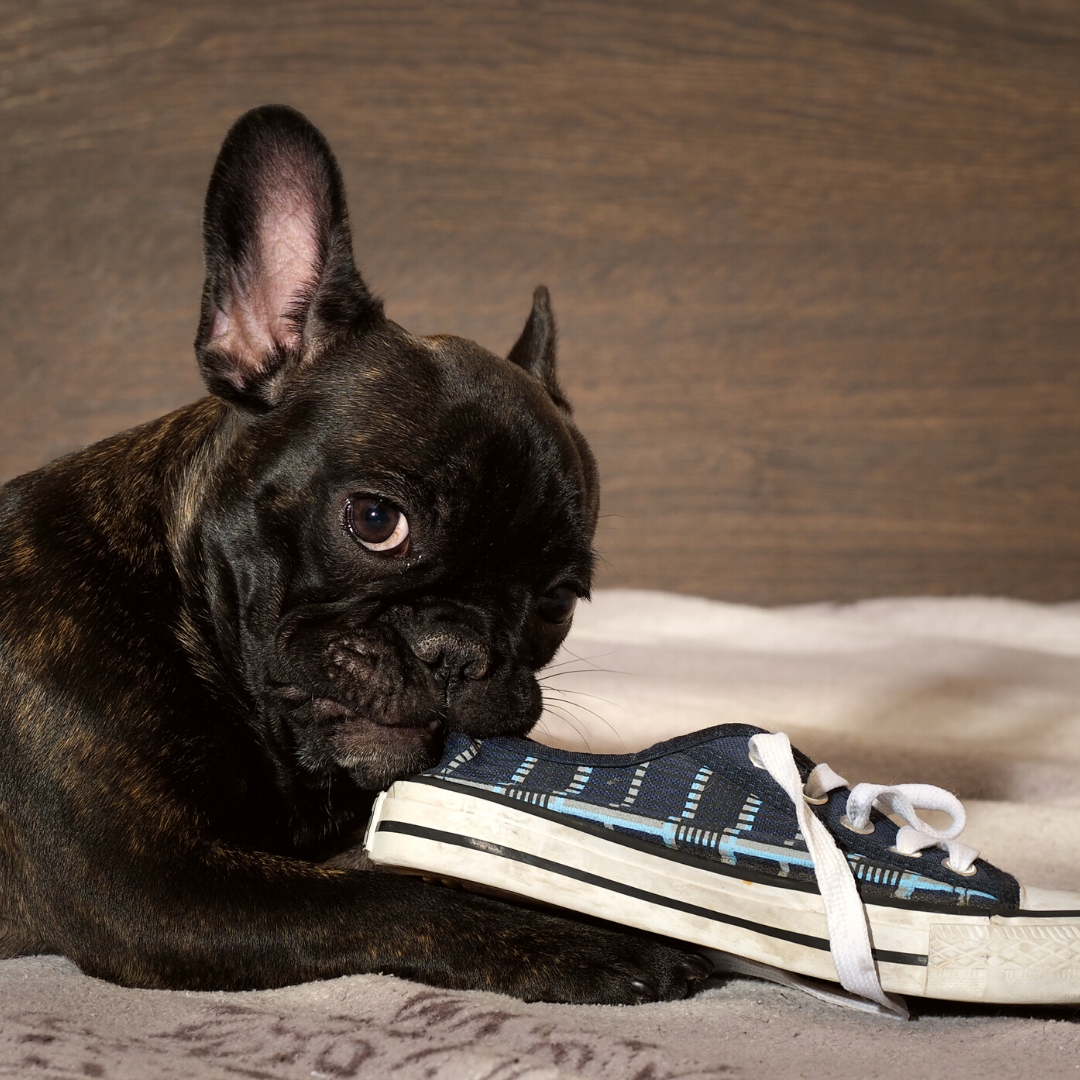
- Consider a good interactive and mentally stimulating dog toy.
Bullibone worked with engineers and vets to create Spin-a-bone. Spina-a-bones are toys for dogs that move that are both mentally stimulating and help clean teeth. The toy took 2 years to design and make sure it was engineered perfectly, before it was finally patented and launched. (U.S. Patent No. 10,986,814 for the “Spinnable Pet Toy.”)
You can spin the toy on the ground like a fidget spinner for dogs. The spinning action stimulates the dog’s brain through their prey and hunting drives. The dog catches the toy and then chews on it. This is a super fun way to promote excited behavior as a dog parent and give them the mental stimulation they need.
Spin-a-Bones are a nice treat that dogs go wild for. They are also an effective way to help dogs manage anxiety by providing an outlet for their nervous energy. Chewing has been proven to help promote relaxation and calmness. Chewing helps to stimulate the release of endorphins and keep your dog’s teeth clean and healthy.
The Spin-a-Bones are long-lasting dog chew toys with multiple chew heads and an elevated spinning base for interactive and fun engagement. The spinning action activates a dogs’ natural instincts. Let them go wild on these delicious smelling and durable bones!
- Seek professional help
If you’ve exhausted all these strategies and your dog’s separation anxiety doesn’t seem to be progressing, seeking professional help might be the proper next step. Make sure to ask yourself “did I really try these other techniques or did I do them for a week and give up?” If the answer is still yes, then it might be a good idea to look into professional help. A veterinary behaviorist or certified dog trainer can assist you in creating a targeted behavior modification plan to support your dog in overcoming this challenge. They might suggest techniques like desensitization and counterconditioning or propose more intensive measures, such as medication or a specialized training program.
Becoming a good pet parent is a long journey that can have ups and downs. Learning how to get a dog to calm down can seem daunting or “heartbreaking”, but it’s a process that helps us become the best pack leader for our pups. Remember that it’s not your pup’s fault, and your furry friend is not being “bad” or “naughty.” They are simply experiencing anxiety and have not found the proper outlet for this excess energy. Introducing them to some good anxiety bones for dogs can be a step in helping them overcome it.
